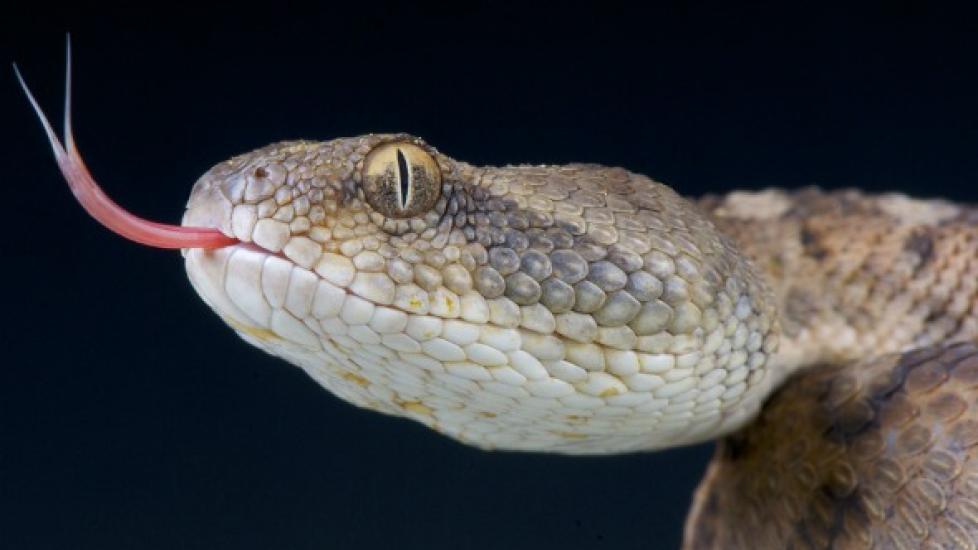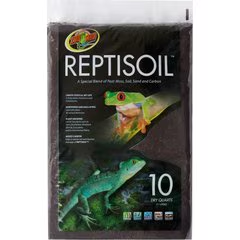Why Do Snakes Use Their Tongue?
Hint: It's Not For Talking
The fact is, the snake, and its tongue, have gotten a bad rap. A snake's tongue is one of the great marvels of nature; a cleverly designed appendage that gives the snake, one of the humblest creatures found in the animal kingdom, a much needed leg-up.
While there are other animals that have forked tongues, (some species of lizards, frogs and birds, for example), the snake has been found to have the most complex receptor system built into its tongue.
To begin, if you look into a snake's open mouth, you will not see much of a tongue at all. That is because most of the tongue is hidden inside of a sheath in the lower jaw when it is retracted, so that only the forked ends are visible. When the snake does flick its tongue, it passes through a small notch in the lip, called the rostral groove, which allows for the tongue to pass out of the mouth without the mouth having to actually be opened. You can also clearly see that snakes have nostrils. And indeed, they have an olfactory system and can smell with their nostrils, just as we can, but it's the tongue that is the biggest prop.
The snake uses its tongue as part of the system of perception called the vomeronasal system - - because of its relative proximity to the vomer bone at the front of the skull and the nasal system. The vomeronasal system is a sensory organ made up of two small openings in the roof of the mouth in many animals, including humans. This is also referred to as the Jacobson's organ (named for the man who discovered the organ), which for snakes has evolved to be of optimum use for their survival.
The "Smelling" Tongue
When a snake's tongue is flicked out into the air, receptors on the tongue pick up minuscule chemical particles, which are perceived as scent. When the tongue is retracted into its sheath, the tips of the tongue fit neatly into the Jacobson's organ, sending the chemical information that has been gathered through the organ and to the brain, where the information is quickly processed and analyzed so that the snake can act promptly on it.
Why are snakes' tongues forked?
It is believed that the snake's tongue is split so that it knows which direction to move based on the preponderance of chemical particles on one side of its forked tongue in relation to a lesser degree of particles on the other side of the tongue. Think of it as akin to having 3-D glasses for the tongue. The chemical levels are slightly different on the right than the left, but together they make a whole story. This information is subtle, and small animals are fast, so it must be processed as speedily as possible for the snake to catch its dinner.
Or, on the other hand, to prevent the snake from becoming dinner, as it must also analyze information that can detect a predator nearby. And, not least in importance by any means, the tongue, along with the Jacobson's organ, also helps the snake to discover who to take out for dinner, as the chemical receptors in the tongue gather information about potential mates that are nearby.
CAN SNAKES SEE?
Yes, snakes see with their eyes, however their eyesight is not one of their strongest senses. Basically, snakes can see well enough to track pray, but not to discern details and fine movements. Their main sensory organs are the snake tongue and Jacobson's organ. However, some snake species have better eyesight than others, it all depends.
See Also:
Debunking the Myths
There are a few ancient beliefs about the snake's tongue. One was that it had magical powers against poison, and indeed, collections of snake tongues were kept in the dining areas of upscale homes. In the course of story telling, snakes tongues were used in the making of witches brews, as in Shakespeare's Macbeth.
A myth still believed by some people today is that snakes have venom in their tongues, which is released when the tongue touches a target, or that the pointed ends of the tongue are in fact pointed and sharp and can be used as a stinger. Neither is true.
First, not all snakes are venomous, and those that are release their venom through their teeth (or fangs). Once a venomous snake has bitten its prey and released its venom into the animal's bloodstream, it can then track the stricken animal using the receptors on its tongue, consuming its meal when the animal finally succumbs to the poison. On the second misconception, a snake's tongue is as delicate and soft as any animal's tongue; it is neither able to hold poison, nor is it rigid and sharp.
In fact, the tongue is of such critical importance to the snake that this is clearly why it evolved to have a tongue sheath to protect this appendage from accidental injury.
Otherwise, it is believed that the taste buds in a snake's tongue are somewhat minimal, at least compared to ours. It is probable that the actual taste receptors are just enough to tell the snake whether the food is good, or whether it may be noxious.
Not So Lowly After All
Still, don't feel too sorry for the snake just because it can't properly enjoy the taste of its dinner. Remember that what its tongue lacks in some ways, it makes up for in other ways.
Try this: Stick your tongue out and try to figure out which way to go for dinner, or where to find your next date. Maybe then you'll have a little more appreciation for the lowly snake.




